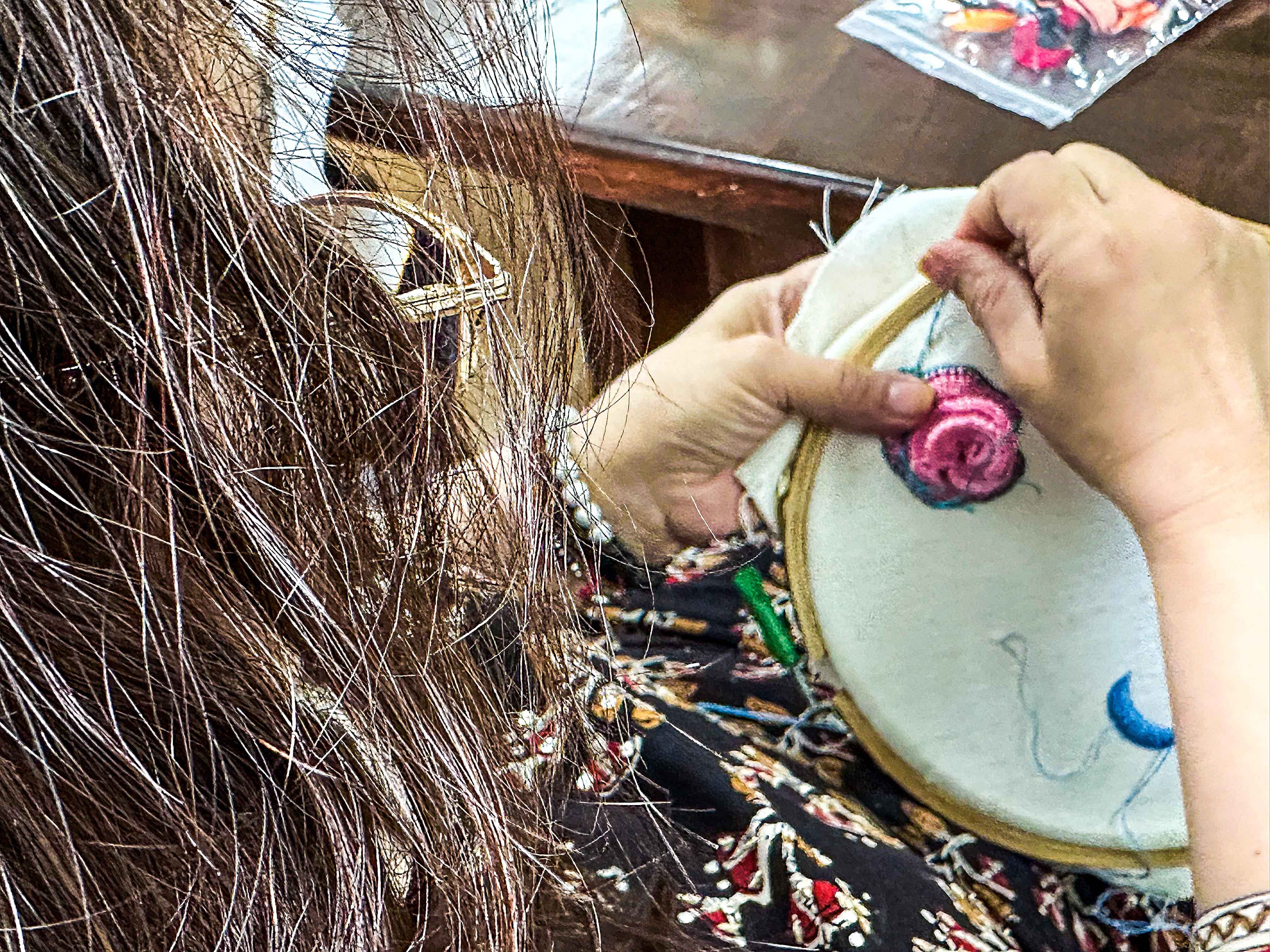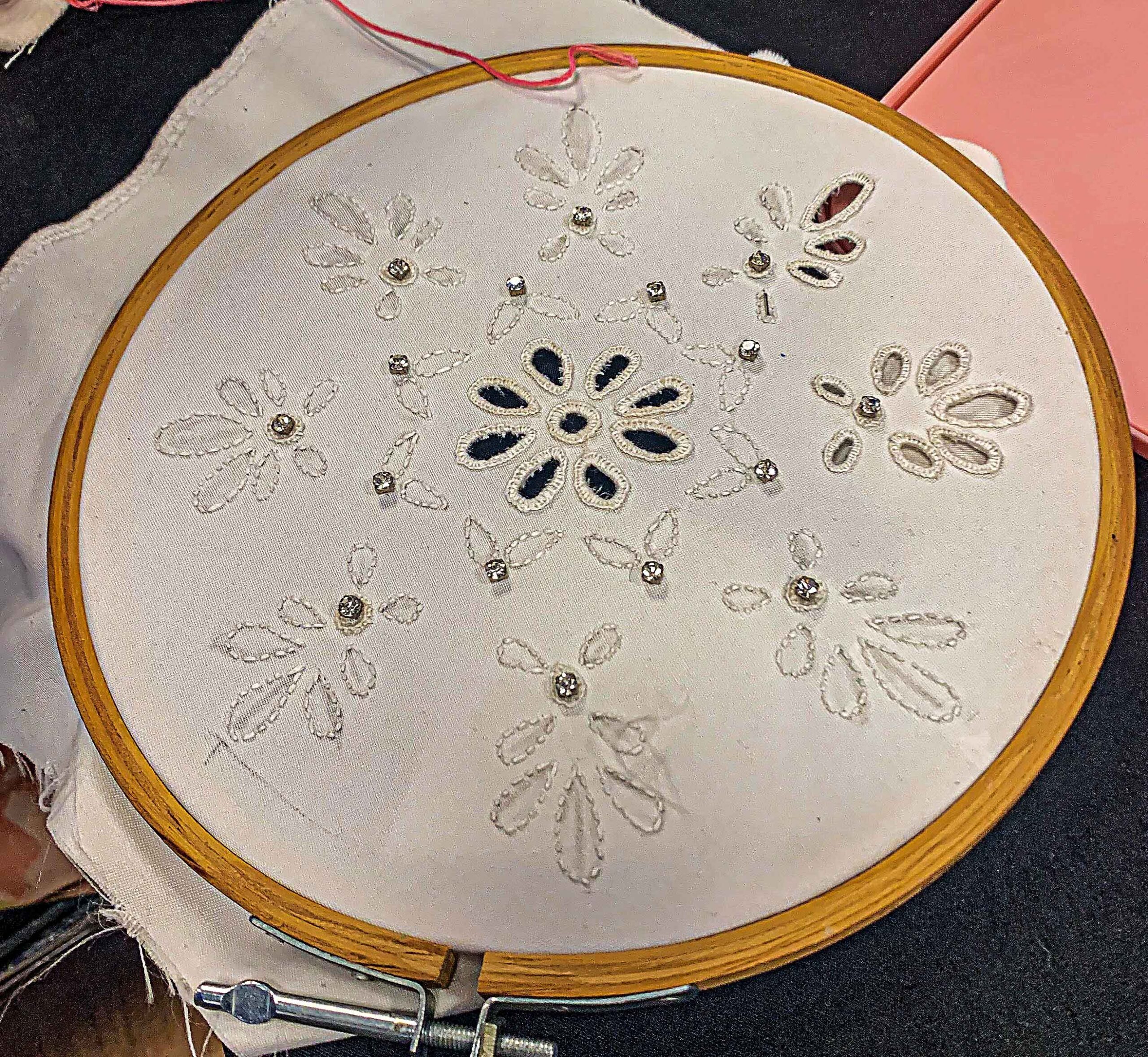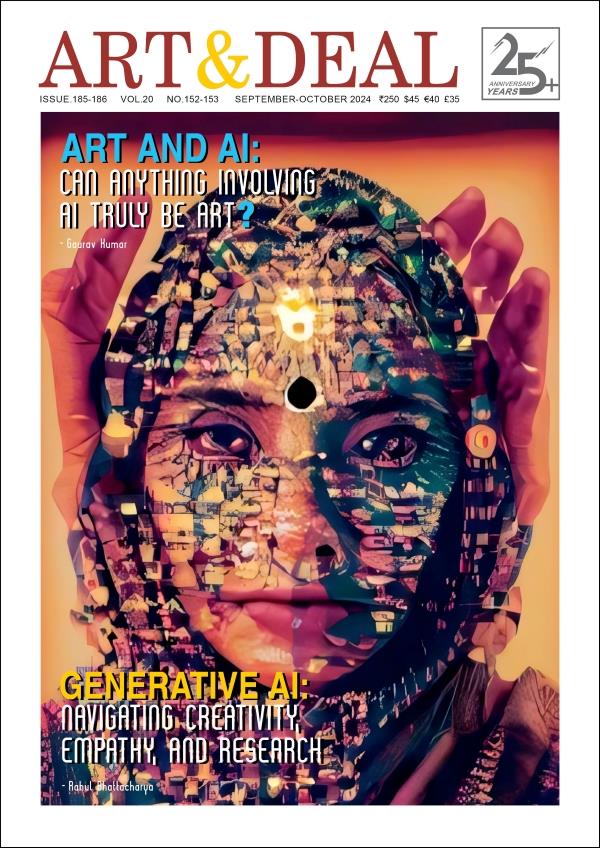‘Slow’ has become a kind of movement that suggests slowing down, applied to many things including food. Essentially about decelerating the pace of life by making a deliberate decision to do so, its ethos embraces local and seasonal rhythms towards generating thinking time. In craft terms, the slow approach is a celebration of process; work that has reflection at its core, and skill that takes time to learn as also make with.
The tempo of life in the 21st century can be overwhelming. Everyone is relentlessly busy, but this is not a new phenomenon. In 1875, an article called ‘Life at High Pressure’, bemoaned “a life lived so full […] that we have no time to reflect where we have been and whither, we intend to go.” Around the same time, William Morris and makers within the Arts and Crafts Movement were consciously returning to pre-industrial processes using natural dyes, hand embroidery, and handloom weaving, despite and because of the availability of faster and modern alternatives. The issue of speed, preoccupied artists too. In 1939, the Bauhaus weaver Anni Albers wrote, “indecision due to speed, the acceleration of processes, (and hence) the rise and fall of ideas” something that one faces as an artist more so today. Instagram and other media are great for sharing and connecting with other artists but it also provides more than necessary stimulus for creative ideas. Making decisions, and judicious choices is about connecting with yourself and understanding what it is that preoccupies you and your work as an artist. Often, I’m excited about something new that I’ve learned or seen. But, it’s a distraction from the deeper exploration that I need to engage with. Yes, play and experimenting is indeed integral to any creative process but it is in mastering a domain that true creativity emerges; that which can change the prevailing culture and inform it.
The digitised format of our times has come to symbolize an overload of information. Communication is so much faster, and emails and other notifications appear incessantly on our phones. We check frequently so as not to miss out on essential communiques. We rarely write with our hands, and even using the laptop is eschewed by the convenience and facilities of the smartphone. Everything is pretty much in the palm of our hands. Convenient but stressful too!
So how does one de-stress? How does one make judicious choices without eliminating the internet and/or becoming a social recluse? How does one create scope for joining the ‘Slow’ movement and yet be a part of this vibrant and dynamic world?
Sewing is a mindful practice. Slow Stitch is as much about embroidery in contemporary art as it is about a way of life. Stitching becomes a means to slow down. A process that provides scope to think. To let the mind unravel itself towards greater clarity as well as to disconnect from the frenetic connections that digital technologies encourage. Your hands are occupied making it impossible to scroll down your social media feed.
The process of sewing requires full attention and therefore a mindful practice that opens up a space to enable better decisions. It’s a space to feel the feelings and understand them and ourselves more reassuringly. A means to untangle the over-stimulated being and feel more at peace with oneself, because of this knowing and understanding.
It also affords a better appreciation of what it means to make by hand. It allows us to engage with the crafting and making of things with our hands which, in turn, fosters a greater understanding and appreciation of the crafts and craftsmen. And in India, this connects us to the precious heritage of textiles and other crafts that we are still fortunate to have as a living tradition.
Richard Sennet proposes that “while the idea of craft and craftsmanship may suggest a way of life that waned with the advent of industrial society; this is misleading……(for) Craftsmanship names an enduring basic human impulse, the desire to do a job well for its own sake.” This draws on the ideas expounded by the art historian Ananda K. Coomaraswamy, who told us that the ancient Indian practice of art, which explored and included 64 Shilpas, including kissing, cooking, horse riding, was about just this ideal – it wasn’t what you did, but how you did it that made it art. And that philosophy holds for any craft even today.
Stitching is about making. It doesn’t have to be a work of art. It could be a gift for a friend or just something for yourself. Craft and creativity are at the heart of making. When we create something with our hands, it enables a sense of potency and expressive ways to connect with other people; a sense of meaningful engagement with the world.
While much of my work is about creating art that’s exhibited in the gallery space when I choose to use the skills, I have acquired through my professional and art training to make a blanket for my grand-niece and nephews, the thrill, pleasure, and satisfaction in this was irreplaceable. And, the joy of those, for whom these gifts were created – my nephews and their wives, was precious.
I trained as a textile designer and have been working with textiles since 1976. It’s a very long time. I have learned weaving, knitting, crocheting, and embroidery and for me, it’s unthinkable to work any other way. All these processes are time-consuming. There’s no way in which you can hurry through them. It doesn’t mean that I don’t avail the benefits of technology, because I do. My work incorporates photography and I use digital printing on fabric, paper, and canvas to embroider and crochet. I’m also a writer and the craft of writing is also something that I spend considerable time honing.
Despite all this focus on craft, it’s the ‘slow’ processes that I turn to at the end of the day to unwind. Threading the needle or hooking it, using mind and body to make it, and watching fabric grow or transform is a wonderful thing. I remember when I used to weave, I thought it was such a magical thing. First, there was an empty loom. Then one threaded it, and started inserting the weft that interlaced with the warp threads, and inch-by-inch fabric was created. It always gave me a thrill and I could well appreciate how our Vedic forefathers would have been inclined to use the act of weaving as a metaphor for the creation of the universe where “they made the melodies into shuttles for weaving”
Sometimes, I also stitch during the day. There are many things that one needs to do as an artist and human being that create a sense of fatigue. Some days, I just can’t look at another email or respond – no matter how necessary it may be. Likewise with phone calls and getting a carpenter or electrician to attend to small jobs. The relentless reminders are enervating. But, on those days, when the mind feels laden and I disrupt the daily routine to stitch instead, after just half an hour I feel energized enough to do one thing. Then another and so much does get accomplished because of the repetitive movement of the needle into the fabric and out and back in again and again – the mindful stitching process allows the jumbled mind to unravel and one can sift the wheat from the chaff. Then, there’s room to compose an email or remind the carpenter for the next time. And, if I have been procrastinating about an article or story I’ve committed to writing because I just can’t figure out how to begin, the same process puts my mind in sync with the life force energies. I’m in a state of flow and inspired.
In May and June this year, I conducted a 3 Saturday ‘Slow Stitch’ workshop at the Kiran Nadar Museum of Art in Saket, New Delhi. I was pleasantly surprised to see young people there. Some are in their twenties. When asked what attracted them to the workshop, they all cited the need to slow down and connect with themselves. Not everyone is inclined to meditate in the way yogis do. And, despite a three-decade-long practice of meditation as taught by Swami Paramahansa Yogananda (Autobiography of a Yogi), I often skip this kind of meditation for the stitching process – especially at the end of the day.
“You cut a length of thread, knot one end, and pull the other end through the eye of a needle. You take a piece of fabric and you think about what you’re going to make, what you are going to say, who it will be for, and what others will be able to read from it. And you consider what patterns and motifs you might use in this embroidery. Will it have a story or will its message be told in symbols – readable to future generations? Will it hold sewn promises of protection, blessings from the heart, warnings to spirits who might wish harm? You choose colours with care to convey specific emotions. You look through your collection of adornments, the tiny glittering sequins, the box of beads, the braid of jig jigging pompoms and select all or some to add when the embroidery is complete, then you push your threaded needle in one side of the cloth and pull it out on the other, on and on, in rhythmic sewing, until you have made something that matters: a thing of beauty and meaning, an embroidery that holds your spirit fast within its threads” (Claire Hunter – extracted from World of Threads)
Stories are what our lives are made of. Everything we experience has a context, which is the catalyst for learning, insights, and more. I love stories. And, the art of embroidery has many fascinating stories. According to the Bible, it dates back to the beginning of time when Adam and Eve stitched together fig leaves. Since then, from the simple act of holding together furs and skins for clothing, men and women have developed a sumptuous repertoire of embellishment.
Contrary to popular belief, it wasn’t a homely craft but was done by Queens (Mary Queen of Scot comes to mind instantly) and other people of high social rank in all societies across the globe.
Its exact origins are hard to pinpoint, but myths and legends abound from Goddess Athena who taught the Greeks and turned Arachne, for besting her in the art, into a spider, to the Chinese emperor’s wife who accidentally discovered mulberry silk when a cocoon fell into her teacup and started unravelling. Chinese silk embroidery is probably the origin of this incredible craft. Like everything else, looking for conclusions and evidence leads us to uncover more and more about life and its many stories. A constant source of wonder that keeps alive the spirit.
“Stitch can be metamorphic; it can be transitional both physically and conceptually. Cloth and stitch can seem at times to be one entity, one indivisible world of meaning, a harmony of direction and experience. At others it can seem more like a struggle with identity, an uncomfortable alliance between opposites, both demanding to go in their own mutually exclusive directions, their pathways being in no way linked.
This matching and mismatching, this harmony and struggle, often has much to do with what the artist is trying to convey through stitch. It is always the creative perception of the artist which so often colours the seeming reality of success or failure through stitch, though of course all is forever subjective, and success or failure in the art are often meaningless terms.”
For me, stitch is a language—a very contemporary one at that to express feelings and ideas as well as reflect upon the environment that I live in. Stitch or embroidery is a wordless language that enables subconscious ideas to come up without inhibition and this in turn has been very rewarding for me in my journey towards selfhood.
Read More>> Please Subscribe our Physical Magazine



